| |
|
There are two
separate villages of Hacheston, Upper and Lower. Lower is
down on the A12, but All Saints is in the Upper village.
The church sits on the busy road between Framlingham and
Wickham Market, and thousands of people must pass it
every day. It is perhaps an undistinguished church at
first sight, although the tower is dramatic from the
road, which has cut down beside it. On the north side of
the graveyard is the huge Arcedeckne mausoleum, as big as
a garage. It seems to sulk from being so cut off, for the
north side of the church is not the more attractive
aspect. On the south side, the early 16th century south
aisle is beautiful and lends a quiet grandeur to what
would otherwise be a fairly small church.
Unusually for Suffolk, but as at neighbouring Parham, you
step directly through the west door into the space
beneath the tower and into the lovely church, with its
patina of age that the Victorians failed to erase. All
Saints was the very last stop on William Dowsing's grand
wrecking spree of 1644, and he had not run out of
enthusiasm or ideas, defacing imagery on the font and,
unusually, also taking the roodscreen to task.
Presumably, it hadn't been vandalised enough by the
Anglican reformers of a century earlier. Since the 1880s
restoration, the roodscreen panels have been relocated to
the west end of the nave, around the font. The Saints are
badly damaged. They appear to have been a set of the
Apostles, and you can still make out St Jude, St Simon
and St James.
There are some quietly good examples of late 19th and
early 20th Century glass workshops. The window depicting
the raising of Dorcas on the north side of the nave is by
Lavers & Westlake. St George and St Martin flank
Christ in Majesty in Bryans & Webb's 1919 east
window, the war memorial. The same workshop was also
responsible for the Presentation in the Temple in the
south aisle. Another quiet survival is the 17th Century
pulpit, simply reset on a podium by the 19th Century
restorers.
Every medieval church had its rood of course, and
although none survive thanks to the efforts of Edward
VI's cronies, some of the tympana to which they were
attached have. The Wenhaston Doom, ten miles away, is one
of the most famous in England, a richly painted setting
that backed the rood. After the Reformation, these
tympana were generally whitewashed, and had the royal
coat of arms fixed to them, along with a few well-chosen
verses to remind the common people who was in charge now.
Because of this, and a little ironically under the
circumstances, the tympana were generally removed and
destroyed by the Victorian restorers as not being
medieval enough. Only a few survive, and Hacheston's
doesn't, but the timbers that supported it are still in
place above the rood beam, an unusual survival.
Dowsing is blamed for a lot, but most of the damage done
to our medieval churches occured 100 years before he went
on his merry way. His was essentially a mopping up
operation. In the 1540s, the hooligan gangs of the
Reformation vanguard went on their drunken sprees. Their
main targets were images of the Blessed Virgin and the
Saints. By Dowsing's time, no relief or statue of a saint
survived in situ anywhere in Suffolk. Most were
destroyed, although some were sold abroad for a quick and
easy profit. A few, however, were either carelessly
discarded below floorboards or even rescued and hidden.
During the Victorian restorations of our English churches
several came to light, most famously in Suffolk the image
of the Adoration of the Magi at Long Melford. There is
one here, too, set in the wall of the south aisle. It
shows St Thomas touching the wounds of Christ, exquisite
in alabaster. The person who made it in 14th century
England could not have begun to imagine how unusual it
would one day be.
Simon
Knott, January 2020
Follow these journeys as they happen at Last Of England
Twitter.
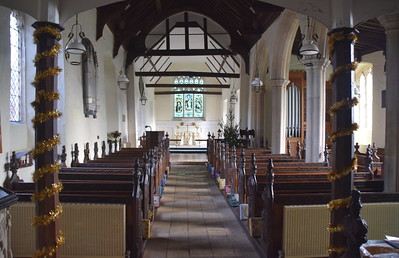  
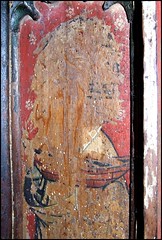    
 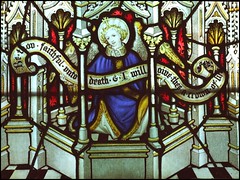 
 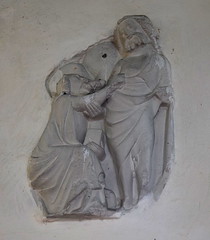 
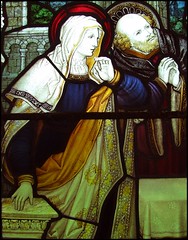    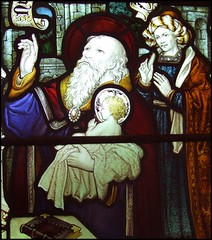
Amazon commission helps cover the running
costs of this site
|
|
|

